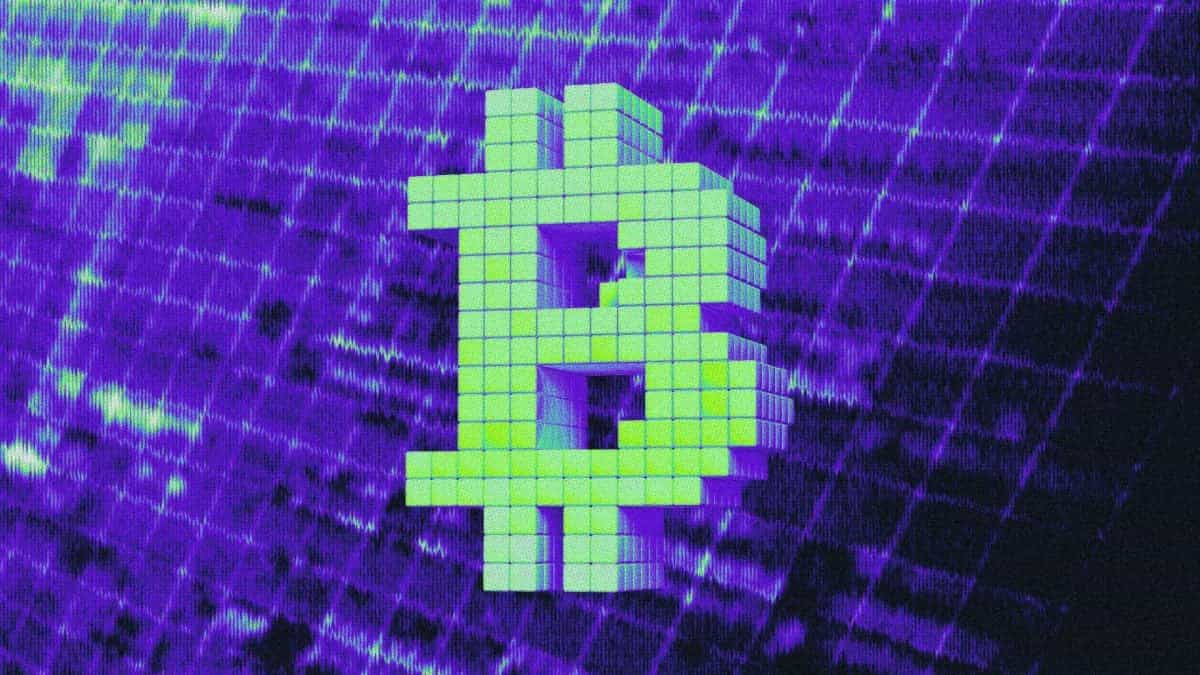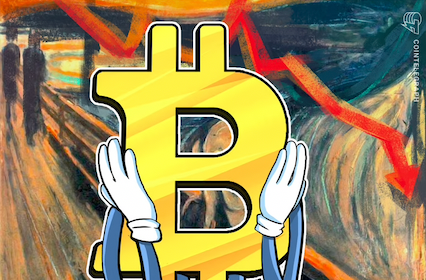
May kaugnayan sa coin
Price calculator
Kasaysayan ng presyo
Paghula ng presyo
Teknikal na pagsusuri
Gabay sa pagbili ng coin
kategorya ng Crypto
Profit calculator

Bitcoin presyoBTC
Ano ang nararamdaman mo tungkol sa Bitcoin ngayon?
Presyo ng Bitcoin ngayon
Ano ang pinakamataas na presyo ng BTC?
Ano ang pinakamababang presyo ng BTC?
Bakit ang presyo ng BTC laging pabagu-bago? Anong mga salik ang nakakaapekto sa pagganap ng BTC mga presyo?
Bitcoin price prediction
Kailan magandang oras para bumili ng BTC? Dapat ba akong bumili o magbenta ng BTC ngayon?
Ano ang magiging presyo ng BTC sa 2026?
Ano ang magiging presyo ng BTC sa 2031?
Bitcoin price history (PHP)
 Lowest price
Lowest price Highest price
Highest price 
Bitcoin impormasyon sa merkado
Bitcoin's market cap history
Bitcoin market
Bitcoin holdings
Bitcoin holdings distribution matrix
Bitcoin holdings by concentration
Bitcoin addresses by time held

Bitcoin na mga rating
Tungkol sa Bitcoin (BTC)
Ang Bitcoin (pinaikling BTC; simbolo: ₿) ay ang pinakakilala at malawak na ipinagpalit na cryptocurrency sa loob ng mahigit isang dekada. Ang pinakamaliit na unit ng Bitcoin, na kilala bilang "satoshi" o "sat," ay katumbas ng 0.00000001 Bitcoin.
Taliwas sa pangalan nito, ang Bitcoin ay hindi isang physical coin ngunit nag-exist lamang bilang digital data sa blockchain—isang desentralisadong ledger na secure na nagtatala ng lahat ng mga transaksyon sa Bitcoin. Maaaring mag-imbak ang mga user ng Bitcoin sa mga digital na wallet, na nasa software-based o hardware-based na mga form para sa karagdagang seguridad.
Bilang isang pioneer sa merkado ng cryptocurrency, ang Bitcoin ay nahaharap sa pag-aalinlangan tungkol sa halaga nito. Sa kabila nito, patuloy itong naabot o nalampasan ang mga inaasahan, na nakakamit ng all-time high na halos $100,000 noong Nobyembre 2024.
Ano ang Bitcoin (BTC)?
Ang Bitcoin (BTC) ay isang desentralisadong digital currency na gumagana nang hiwalay sa mga sentral na awtoridad o mga tagapamagitan gaya ng mga bangko o pamahalaan. Nagbibigay-daan ito sa mga user na magpadala at tumanggap ng halaga sa buong mundo na may mababang bayarin sa transaksyon. Bitcoin ay binuo sa teknolohiyangblockchain , isang desentralisadong ledger na ligtas at malinaw na nagtatala ng lahat ng mga transaksyon.
Kadalasang itinuturing na unang cryptocurrency, itinatag ng Bitcoin ang sarili bilang pundasyon ng buong market ng cryptocurrency. Kasama sa mga tampok na pagtukoy nito ang desentralisasyon, kakapusan (na may nakalimitang supply na 21 million coins), transparency, at ang immutability ng mga rekord ng transaksyon nito.
When was Bitcoin created?
Ang Bitcoin ay opisyal na nilikha noong Enero 3, 2009, nang ang unang bloke nito, na kilala bilang Genesis Block o Block 0, ay mined. Ang kaganapang ito ay minarkahan ang simula ng Bitcoin blockchain at ang unang desentralisadong sistema ng cryptocurrency sa mundo. Ang Genesis Block ay naglalaman ng isang mensahe: "The Times 03/Ene/2009 Chancellor sa bingit ng pangalawang bailout para sa mga bangko," na sumisimbolo sa layunin ng Bitcoin bilang isang alternatibo sa mga tradisyonal na sistema ng pananalapi.
Who created Bitcoin?
Ang Bitcoin ay nilikha ng isang indibidwal o grupo ng mga indibidwal sa ilalim ng pseudonym na Satoshi Nakamoto. Ipinakilala ni Nakamoto ang Bitcoin sa mundo sa pamamagitan ng paglalathala ng whitepaper na pinamagatang "Bitcoin: A Peer-to-Peer Electronic Cash System " noong Oktubre 2008.
Sa kabila ng maraming pagsisikap na matuklasan ang tunay na pagkakakilanlan ni Nakamoto, noong 2024, ang tunay na tao o grupo sa likod ng pseudonym ay nananatiling hindi kilala. Si Satoshi Nakamoto ay aktibong binuo at nakipag-ugnayan sa unang bahagi ng komunidad ng Bitcoin hanggang sa lumayo sa proyekto noong 2010, na iniiwan ang hinaharap nito sa mga kamay ng mga developer at ng mas malawak na komunidad.
History of Bitcoin
Ang kasaysayan ng Bitcoin ay minarkahan ng mga pangunahing milestone, teknolohikal na pagsulong, at pagtaas ng adoption:
2008 – Bitcoin launch
● Ang Bitcoin whitepaper ay inilathala ni Satoshi Nakamoto noong Oktubre 31, 2008, na nagmumungkahi ng isang desentralisadong electronic cash system.
2009 – Mga milestone ng Bitcoin
● Ang Genesis Block (Block 0) ay minahan noong Enero 3, 2009.
● Ang unang transaksyon sa Bitcoin ay naganap sa pagitan ng Satoshi Nakamoto at Hal Finney noong Enero 12, 2009.
2010 – Bitcoin's first transactions
● Ang unang real-world na transaksyon sa Bitcoin ay naganap noong ang 10,000 BTC ay ginamit upang bumili ng dalawang pizza (ngayon ay ipinagdiriwang bilang Bitcoin Pizza Day noong Mayo 22).
● Nakuha ng Bitcoin ang unang halaga ng pera noong ito ay na-trade sa isang online exchange sa mas mababa sa $0.003.
2011 – Crypto growth
● Ang iba pang mga cryptocurrencies, tulad ng Litecoin (LTC), ay lumitaw, na inspirasyon ng tagumpay ng Bitcoin.
● Naabot ng Bitcoin ang pagkakapantay-pantay sa US dollar sa unang pagkakataon.
2013 – Bitcoin boom
● Naranasan ng Bitcoin ang unang malaking pagtaas ng presyo nito, na umabot sa $1000.
● Ang tumaas na atensyon ng publiko, kasabay ng pagsusuri sa regulasyon, ay nagsimulang hubugin ang papel ng Bitcoin sa sistema ng pananalapi.
2017 – Bitcoin surge
● Ang Bitcoin ay sumailalim sa isang makabuluhang pag-akyat, na tumama sa lahat ng oras na mataas na halos $20,000 noong Disyembre.
● Ang pagpapakilala ng Bitcoin futures ng CME at CBOE ay nagpapataas ng mainstream adoption.
2020–2021 – Bitcoin investment
● Ang Institutional investment sa Bitcoin ay lumago, kasama ang mga kumpanyang tulad ng Tesla at MicroStrategy na bumibili ng malalaking halaga ng BTC. Pumalo ang Bitcoin sa $69,000 noong Nobyembre 2021.
Recent years – Bitcoin's new evolution
● Noong 2023, Ordinals—non-fungible tokens (NFTs)—ay opisyal na inilunsad sa Bitcoin blockchain.
● Ang Bitcoin ay patuloy na nahaharap sa mga hamon tulad ng pagsusuri sa regulasyon, kumpetisyon mula sa mga mas bagong blockchain, at mga alalahanin sa kapaligiran dahil sa proseso ng pagmimina nito na masinsinan sa enerhiya. Sa kabila ng volatility, nananatili itong pinakamalaking cryptocurrency sa pamamagitan ng market capitalization.
How does Bitcoin work?
Binibigyang-daan ng Bitcoin ang mga indibidwal na magpadala at tumanggap ng mga pagbabayad nang hindi umaasa sa mga bangko o tagapamagitan. Gumagana ito sa teknolohiyang blockchain, isang desentralisado at secure na digital ledger na malinaw na nagtatala ng lahat ng mga transaksyon. Ang blockchain ay pinapanatili ng isang network ng mga computer (node) na ipinamamahagi sa buong mundo, na pumipigil sa alinmang entity na kontrolin ang system. Iniimbak ng mga user ang kanilang Bitcoin sa mga digital na wallet, na sinigurado ng isang pampublikong susi (ginagamit para sa pagtanggap ng Bitcoin) at isang pribadong key (ginagamit para pahintulutan ang mga transaksyon).
Halimbawa, kung gusto ni Tom na magpadala ng 1 BTC kay Anna, ibe-verify ng network ang mga pondo ni Tom at pipirmahan ang transaksyon gamit ang kanyang pribadong key. Ang transaksyong ito ay nai-broadcast sa network, kung saan nakikipagkumpitensya ang mga minero upang malutas ang isang cryptographic puzzle. Ang unang minero na lutasin ang puzzle ay nagpapatunay sa transaksyon, idinagdag ito sa blockchain, at kumikita ng bagong likhang Bitcoin bilang reward. Kinukumpirma ng prosesong ito ang transaksyon at pinapanatili ang seguridad ng network.
Why is Bitcoin's price so volatile?
Ang price volatility ng Bitcoin ay maaaring maiugnay sa ilang mga kadahilanan. Isa sa mga pangunahing dahilan ay ang limitadong supplynito; 21 milyong Bitcoins lamang ang iiral. Ang kakapusan na ito ay nangangahulugan na ang anumang pagtaas sa Ang demand ay maaaring humantong sa isang mabilis na pagtaas ng presyo, habang ang pagbaba ng demand ay maaaring magdulot ng matinding pagbaba ng mga presyo. Ang isa pang salik ay ang impluwensya ng large investors, na kilala bilang “whales," na may hold na malaking halaga ng Bitcoin. Kapag nagpasya ang isang balyena na ibenta ang malaking bahagi ng kanilang mga pag-aari, ang biglaang pagtaas ng available na supply ay maaaring magdulot ng matinding pagbaba ng presyo.
Ang market size of Bitcoin ay relatively small kumpara sa mga tradisyonal na asset tulad ng ginto. Dahil ang market ay mas maliit, kahit na ang mga katamtamang transaksyon ay maaaring humantong sa mga kapansin-pansing pagbabago sa presyo. Malaki rin ang ginagampanan ng mga balita sa media at regulasyon sa paghimok ng mga pagbabago sa presyo ng Bitcoin. Bilang karagdagan, ang halaga ng Bitcoin ay hinihimok ng haka-haka dahil hindi ito gumagawa ng tuluy-tuloy na daloy ng pera tulad ng mga tradisyonal na investments. Panghuli, dahil ang merkado ng cryptocurrency ay medyo bago pa rin, ang presyo ng Bitcoin ay nasa yugto ng pagtuklas, na humahantong sa madalas at hindi inaasahang pagbabago. Sa paglipas ng panahon, habang tumatanda ang merkado, ang mga pag-indayog na ito ay maaaring maging hindi gaanong sukdulan.
What makes Bitcoin valuable?
Ang Bitcoin ay higit pa sa isang digital na pera—talagang sinusuri nito ang lahat ng mga kahon para sa kung ano ang tumutukoy sa pera. Una, mayroong kakapusan: 21 milyong Bitcoins lang ang iiral, ginagawa itong bihira at mahalaga, parang ginto. Pangalawa, ito ay gumagana bilang isang daluyan ng palitan, na may dumaraming bilang ng mga merchant at platform sa buong mundo na tumatanggap ng Bitcoin para sa mga produkto at serbisyo, na nagpapakita ng pagiging praktikal nito para sa mga transaksyon sa totoong buhay.
Nagsisimula na rin itong magsilbi bilang isang unit ng account, na may mga negosyo at indibidwal na nagpepresyo ng mga item sa Bitcoin, sa kabila ng ang halaga nito ay napapailalim sa malalaking pagbabago. Panghuli, ang Bitcoin ay itinuturing na isang tindahan ng halaga dahil sa desentralisadong kalikasan, seguridad, at limitadong supply nito, na ginagawa itong isang maaasahang paraan ng pag-iingat ng yaman sa paglipas ng panahon. Iyon ang dahilan kung bakit madalas itong tinutukoy ng mga tao bilang "digital na ginto"—isang modernong paraan para sa paghawak at pagpapalaki ng halaga sa isang pabago-bagong pinansiyal na tanawin.
When is the next Bitcoin halving?
Ano ang Bitcoin halving?
Ang Bitcoin ay nakakaranas ng isang makabuluhang kaganapan na kilala bilang "paghati " humigit-kumulang bawat apat na taon. Hinahati ng kaganapang ito ang reward para sa pagmi-mining ng mga bagong blocks, na epektibong nagpapabagal sa rate ng paggawa ng mga bagong bitcoin. Ang paghahati ay nagpapatuloy hanggang ang total supply ng Bitcoin ay umabot sa cap nito na 21 million coins, na inaasahan sa paligid ng taong 2140. Ito ay isang pangunahing elemento sa disenyo ng Bitcoin, na nilayon upang kontrolin ang supply ng currency.
Historical halvings
● First halving (2012): Naganap noong Nobyembre 28, na binabawasan ang block reward mula 50 BTC hanggang 25 BTC. Ang presyo noong panahong iyon ay humigit-kumulang $12, at tumaas ito nang malaki, umabot sa humigit-kumulang $1,100 sa huling bahagi ng 2013.
● Second halving (2016): Naganap noong Hulyo 9, pinutol ang reward mula 25 BTC hanggang 12.5 BTC. Ang presyo ng Bitcoin ay humigit-kumulang $650 sa araw ng paghahati at umakyat sa halos $20,000 noong Disyembre 2017.
● Third halving (2020): Nangyari noong Mayo 11, binabaan ang reward mula 12.5 BTC hanggang 6.25 BTC. Ang presyo ay humigit-kumulang $8,600 sa oras na iyon at kalaunan ay umabot sa all-time high na $69,000 noong Nobyembre 2021.
● Fourth halving (2024): Naganap noong Abril 20, na binawasan ang block reward sa 3.125 BTC. Ang presyo sa panahon ng paghahati ay humigit-kumulang $73,800, na may Bitcoin na malapit sa $100,000 mamaya sa taon.
The 2028 halving
Ang susunod na pagha-halving ng Bitcoin ay inaasahang magaganap sa 2028, na babawasan ang block reward mula 3.125 BTC hanggang 1.5625 BTC. Ang eksaktong petsa ng halving ay hindi tiyak, dahil depende ito sa taas ng block. Ang mga kalahok sa market ay nag-iisip na kung paano ang pagbawas sa supply na ito ay maaaring makaimpluwensya sa demand at, pagkatapos, ang presyo ng Bitcoin.
Does Bitcoin halving affect BTC's price?
Ang paghahati ng Bitcoin sa kasaysayan ay nagkaroon ng malaking epekto sa presyo nito, kadalasang nag-aambag sa mga pangunahing bull run. Sa pamamagitan ng pagbabawas sa rate kung saan ang mga bagong Bitcoin ay nilikha, ang paghahati ay ginagawang mas mahirap ang Bitcoin, na nagpapataas ng apela nito sa mga investor na nagpapahalaga sa limitadong supply nito. Gayunpaman, ang iba pang mga salik tulad ng mga kondisyon sa market, macroeconomic trend, at adoption rate ay may mahalagang papel din sa pagtukoy sa presyo ng Bitcoin.
Bagama't nagmumungkahi ang mga makasaysayang trend ng positibong ugnayan sa pagitan ng paghahati ng mga kaganapan at paglago ng presyo, hindi ginagarantiyahan ng nakaraang pagganap ang mga resulta sa hinaharap. Ang 2028 halving ay malamang na makaakit ng malaking atensyon at haka-haka, na ginagawa itong isang mahalagang kaganapan para sa mga mahilig sa Bitcoin at mga investor.
Potential use cases for Bitcoin
● Digital medium of exchange: Pinapadali ng Bitcoin ang mga direktang transaksyon nang walang mga tagapamagitan, na ginagawa itong perpekto para sa mga cross-border na pagbabayad na may mas mababang bayad at mas mabilis na pagproseso.
● Tindahan ng halaga: Bilang "digital na ginto," ginagamit ang Bitcoin para mag-hedge laban sa inflation at mapanatili ang yaman dahil sa kakulangan at kalayaan nito mula sa mga tradisyonal na sistema ng pananalapi.
● Integration with Fintech and IoT: Magagawa ng Bitcoin ang mga makabagong solusyon sa fintech at mga microtransaction ng IoT, na nagbibigay-daan sa mga awtomatikong pagbabayad at mahusay na mga produktong pinansyal.
● Pinansyal na empowerment at pagsasama: Nagbibigay ang Bitcoin ng pinansiyal na access sa mga hindi naka-banked na populasyon, na nagbibigay-daan sa secure na pagtitipid at mga transaksyon nang hindi umaasa sa mga tradisyonal na sistema ng pagbabangko.
Ano ang pagmimina ng Bitcoin?
Ang pagmimina ng Bitcoin ay ang proseso ng paglikha ng mga bagong Bitcoin at pagkumpirma ng mga transaksyon sa network ng Bitcoin. Ito ay batay sa isang sistema na tinatawag na Proof-of-Work (PoW) , kung saan ang mga miner ay gumagamit ng makapangyarihang mga computer upang malutas ang mahihirap na problema sa matematika. Kapag nalutas ng isang miner ang isa sa mga problemang ito, maaari silang magdagdag ng isang bloke ng mga transaksyon sa blockchain, na siyang pampublikong ledger ng Bitcoin. Bilang reward, ang miner na lumulutas sa problema ay unang tumatanggap ng mga bagong likhang Bitcoins at ang mga bayarin sa transaksyon mula sa block. Gayunpaman, ang mining ay nangangailangan ng maraming computing power at kuryente, na nagtaas ng mga alalahanin tungkol sa epekto nito sa kapaligiran.
Pinoprotektahan din ng Bitcoin mining ang network mula sa mga pag-atake. Halimbawa, a Maaaring mangyariang 51% na pag-atake kung kinokontrol ng isang grupo ang higit sa kalahati ng kapangyarihan ng pagmi-mining ng network. Ito ay magpapahintulot sa kanila na baligtarin o i-block ang mga transaksyon, na nakakasira ng tiwala sa system. Gayunpaman, ang malaking gastos at kapangyarihan sa pag-compute na kinakailangan upang maisagawa ang gayong pag-atake ay ginagawang hindi malamang sa network ng Bitcoin.
When did Bitcoin blow up
Ang pag-angat ng Bitcoin sa katanyagan, madalas na tinutukoy bilang kapag ito ay " blew up," nangyari sa ilang mahahalagang yugto:
● 2013 - Ang unang malaking breakout: Nakakuha ng malaking atensyon ang Bitcoin nang tumalon ang presyo nito mula sa ilalim ng $100 hanggang mahigit $1,000 sa pagtatapos ng 2013. Ang unang malaking rally na ito ay hinimok ng maagang adoption, pagtaas ng coverage ng media, at lumalagong interes ng publiko.
● 2017 - mainstream explosion: Tunay na pumasok sa mainstream ang Bitcoin noong 2017, na ang presyo nito ay tumataas mula humigit-kumulang $1,000 noong Enero hanggang sa halos $20,000 noong Disyembre. Ang kapansin-pansing pagtaas na ito ay pinalakas ng pampublikong sigasig, ang pag-usbong ng mga paunang handog na coin (ICO), at ang simula ng interes sa institusyon sa mga cryptocurrencies.
● 2020–2021 - Institutional adoption: Ang panahon mula 2020 hanggang 2021 ay minarkahan ang isang bagong milestone dahil ang mga pangunahing institusyon tulad ng Tesla at MicroStrategy ay nag-i-invest nang malaki sa Bitcoin, na nagpapataas ng kredibilidad nito at nagco-contribute sa pinakamataas na all-time na $69,000 noong Nobyembre 2021.
● 2024 - Malapit na sa $100,000: Noong 2024, lumapit ang Bitcoin sa hindi pa naganap na presyo na $100,000. Ang surge na ito ay hinimok ng pag-apruba ng Bitcoin spot ETF, lumalagong mainstream at institutional adoption, at political factors, kabilang ang mga pro-crypto na paninindigan mula sa mga figure tulad ni Donald Trump.
Saan ako mananatiling updated sa Bitcoin news?
Kung naghahanap ka ng pinakabagong mga update sa Bitcoin at balita sa crypto, kina-coverered ka ng Bitget. Nag-aalok ang Bitget News ng mga real-time na insight sa market, trend, at mahahalagang update sa mundo ng crypto.
Handa nang matuto pa? Nagbibigay ang Bitget Academy ng mga gabay na madaling sundin, mga trading strategy, at mga ekspertong insight para sa mga baguhan at may experienced traders.
Ano ang karaniwang Bitcoin chart analysis techniques?
Upang maunawaan ang Bitcoin's price movements at makagawa ng trading decisions, mahalaga ang pagsusuri sa tsart. Ang Bitcoin real-time chart ay nag-ooffer ng minuto-minutong update para sa mga active trader, habang ang mga trading chart ay nag-aalok ng mas malalim na analysis na may mga indicator tulad ng RSI at MACD. Ang mga historical price chart ay kapaki-pakinabang para sa spotting long-term trends at identifying key support at resistance levels. Ang mga tool tulad ng mga candlestick chart, moving average, RSI, at volume ay mahalaga para sa pagtukoy ng mga trend at reversal.
Para sa accurate charting at real-time updates, nag-ooffer ang Bitget ng omprehensive tools upang tulungan ang mga trader sa pag-navigate sa Bitcoin’s price action at making smarter trades.
Simulan ang pag-invest sa pamamagitan ng pag-access sa Bitcoin trading page sa Bitget . Ang presyo ng Bitcoin ay ina-update at available sa real-time sa Bitget.
BTC sa lokal na pera
- 1
- 2
- 3
- 4
- 5
Paano Bumili ng Bitcoin(BTC)

Lumikha ng Iyong Libreng Bitget Account

Beripikahin ang iyong account

Convert Bitcoin to BTC
I-trade ang BTC panghabang-buhay na hinaharap
Pagkatapos ng matagumpay na pag-sign up sa Bitget at bumili ng USDT o BTC na mga token, maaari kang magsimulang mag-trading ng mga derivatives, kabilang ang BTC futures at margin trading upang madagdagan ang iyong inccome.
Ang kasalukuyang presyo ng BTC ay ₱4.70M, na may 24h na pagbabago sa presyo ng -1.22%. Maaaring kumita ang mga trader sa pamamagitan ng alinman sa pagtagal o pagkukulang saBTC futures.
Sumali sa BTC copy trading sa pamamagitan ng pagsunod sa mga elite na traders.
Bitcoin balita
![[Initial Listing] Ililista ng Bitget ang Bedrock Token (BR) sa Innovation, LSD at DeFi Zone.](/price/_next/static/media/cover-placeholder.a3a73e93.svg)

Mabilis na Pagsusuri Ang mga spot bitcoin ETF sa U.S. ay nakapagtala ng $274.6 milyon na net inflows noong Lunes, ang pinakamalaking arawang inflows mula noong Peb. 4. Ang mga spot bitcoin ETF ay nakaranas ng limang sunod-sunod na linggo ng net outflows na umabot sa mahigit $5 bilyon.

Nakaranas ang Bitcoin ng pinakamalaking pagbaba ng halaga laban sa US dollar sa loob ng isang linggo kaysa dati habang nagmamadali ang mga mangangalakal ng risk-asset na lumabas.


Buy more
Ang mga tao ay nagtatanong din tungkol sa presyo ng Bitcoin.
Ano ang presyo ng Bitcoin ngayon?
Magkano ang halaga ng 1 Bitcoin sa cash?
Ilang Bitcoins ang mayroon?
What is the price prediction for bitcoin in 2025?
Magkano ang halaga ng Bitcoin sa 2030?
How safe is Bitcoin investment?
Ano ang kasalukuyang presyo ng Bitcoin?
Ano ang 24 na oras na dami ng trading ng Bitcoin?
Ano ang all-time high ng Bitcoin?
Maaari ba akong bumili ng Bitcoin sa Bitget?
Maaari ba akong makakuha ng matatag na kita mula sa investing sa Bitcoin?
Saan ako makakabili ng Bitcoin na may pinakamababang bayad?
Saan ako makakabili ng Bitcoin (BTC)?
Video section — quick verification, quick trading

BTC mga mapagkukunan
Mga tag:
Bitget Insights



Mga kaugnay na asset




























Bitcoin Social Data
Sa nakalipas na 24 na oras, ang marka ng sentimento ng social media para sa Bitcoin ay 3.4, at ang trend ng presyo ng social media patungo sa Bitcoin ay Bullish. Ang overall na marka ng social media ng Bitcoin ay 824,235,078, na nagra-rank ng 1 sa lahat ng cryptocurrencies.
Ayon sa LunarCrush, sa nakalipas na 24 na oras, binanggit ang mga cryptocurrencies sa social media nang 1,058,120 (na) beses, na binanggit ang Bitcoin na may frequency ratio na 38.87%, na nagra-rank ng 1 sa lahat ng cryptocurrencies.
Sa nakalipas na 24 na oras, mayroong total 749,600 na natatanging user na tumatalakay sa Bitcoin, na may kabuuang Bitcoin na pagbanggit ng 411,278. Gayunpaman, kumpara sa nakaraang 24 na oras, ang bilang ng mga natatanging user pagtaas ng 2%, at ang kabuuang bilang ng mga pagbanggit ay bumaba ng 1%.
Sa Twitter, mayroong kabuuang 10857 na tweet na nagbabanggit ng Bitcoin sa nakalipas na 24 na oras. Kabilang sa mga ito, ang 50% ay bullish sa Bitcoin, 10% ay bearish sa Bitcoin, at ang 40% ay neutral sa Bitcoin.
Sa Reddit, mayroong 3336 na mga post na nagbabanggit ng Bitcoin sa nakalipas na 24 na oras. Kung ikukumpara sa nakaraang 24 na oras, ang bilang ng mga pagbanggit bumaba ng 6% . Bukod pa rito, mayroong 0 na komento na nagbabanggit ng Bitcoin. Kung ikukumpara sa nakaraang 24 na oras, ang bilang ng mga pagbanggit ay bumaba ng 0%.
Lahat ng panlipunang pangkalahatang-ideya
3.4